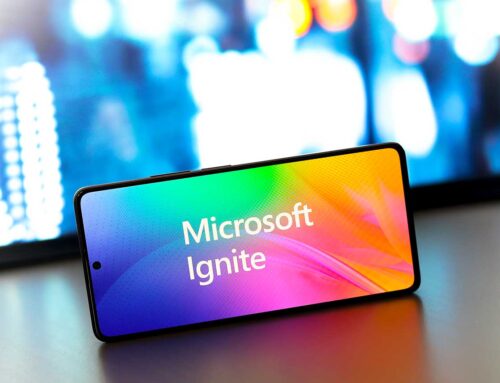It took 4.5 years for Facebook to reach 100 million users. It took ChatGPT only 3 months. Innovation is here and advancing fast. With advancements like SaaS software and Windows 11, the need for traditional reactive or break/fix support has dropped. This shift lets businesses focus more on innovation, making technology an accelerator, not an obstacle.
The Shift in IT Resource Allocation
In the past, a typical IT budget would allocate about 80% on reactive or break/fix support and only 20% on innovation. To stay competitive, this ratio needs to flip. Our team helps clients shift their focus to spending 80% on innovation and only 20% on reactive support. Here’s how:
- Reduced Reactive Support Needs: Modern systems like Windows 11 and SaaS solutions have changed IT management. These technologies offer automated updates, better security, and user-friendly interfaces, cutting the need for traditional break/fix support. This shift lets businesses reallocate resources to more strategic tasks. If most of your budget is going toward managing legacy infrastructure like email servers and PCs, it’s time to change.
- Focus on Security: According to a recent study by NinjaOne, 43% of cyberattacks target small businesses, yet only 14% are prepared to defend themselves. Addressing technical debt, using data management strategies, and adopting AI policies are key steps to protect your business and streamline processes.
- Promoting Innovation and Efficiency: Innovation is at the heart of a successful business strategy. Our Aware reports give insights into security risks and innovation opportunities, helping you make informed decisions. Purchasing accounting, sales, and operations software is essential, but these packages rarely address all processes. Often, the additional processes are unique to the business and end up documented by Excel, Airtable, or even post-it notes—hard to scale and ensure quality control.
The Importance of Innovation
According to McKinsey, 80% of executives believe their current business models are at risk of being disrupted soon. Additionally, 84% of executives say innovation is crucial to their growth strategy. This shows the need for businesses to invest in innovation to stay competitive.
Innovation is not just about keeping up with trends; it’s about setting them. It’s about creating new, more efficient processes that give your business a competitive edge. For legacy businesses that value their past, present, and future, staying on top of trends is crucial to remain relevant and competitive.
Real-World Examples of Innovation
- Thimble: Thimble offers small businesses instant, flexible insurance policies. Their on-demand insurance can last from an hour to a year, making it adaptable to the needs of small businesses. This innovation has helped Thimble grow rapidly.
- Pledge: Pledge turns virtual gatherings into charity fundraising events. By integrating with platforms like Zoom, Pledge makes it easy for small organizations to engage in philanthropy.
- Tractor Beverage Co.: This company offers organic, non-GMO drinks to restaurants. Their focus on sustainability and health has helped them carve out a niche in a competitive market.
- Bookshop.org: Bookshop.org gives independent bookstores a platform to sell books online, offering an alternative to giants like Amazon. This supports small businesses by expanding their reach.
Benefits of Windows 11 and SaaS
Windows 11 supports hybrid work and learning environments, making it easier for IT teams to manage and providing advanced security features. This reduces the need for extensive break/fix support, as the operating system is more streamlined and user-friendly. The shift towards SaaS and modern systems has also cut the time spent on customer communications and project management.
- Enhanced Security: Windows 11 has built-in security features like hardware-based isolation, encryption, and malware protection, which reduce the risk of cyber threats.
- Streamlined Management: The user-friendly interface and automated updates of Windows 11 and SaaS solutions simplify IT management, allowing IT teams to focus on strategic tasks rather than routine break/fix support.
Economic Impact of SMBs
Small and midsize businesses (SMBs) make up a large part of the US economy—44% of GDP, nearly half of all employment, and roughly $370 billion in tech spending. This shows the significant impact of SMBs on the economy and their potential for growth through innovation.
SMBs are the backbone of the American economy, driving innovation and providing jobs. By investing in technology and innovation, SMBs can boost productivity, improve customer satisfaction, and achieve sustainable growth.
Increased Software Spending
More than six in every ten midsize businesses (64%), small enterprises (65%), and large enterprises (67%) globally plan to spend more on software in 2024 compared to 2023. This shows a growing trend towards investing in technology and innovation.
Investing in software is not just about keeping up with trends; it’s about using technology to drive business growth. By adopting innovative software solutions, businesses can streamline operations, improve efficiency, and stay ahead of the competition.
Conclusion
Innovation is not just about creating something new; it’s about creating something better. For legacy businesses that value their past, present, and future, staying on top of trends is crucial to remain relevant and competitive. By shifting the focus from reactive support to innovation, businesses can ensure they continue to meet their vision and legacy.
Let Technology act as an Accelerator, not an obstacle.
Innovative Solutions. Practical Software. Friendly Support.
Ready to transform your business and stay ahead of the competition?
Contact us today to learn how our innovative solutions can help you reduce reactive support needs and focus on what truly matters—growing your business.
Visit tech-house.com or call us at (941)328-8601 to get started.





